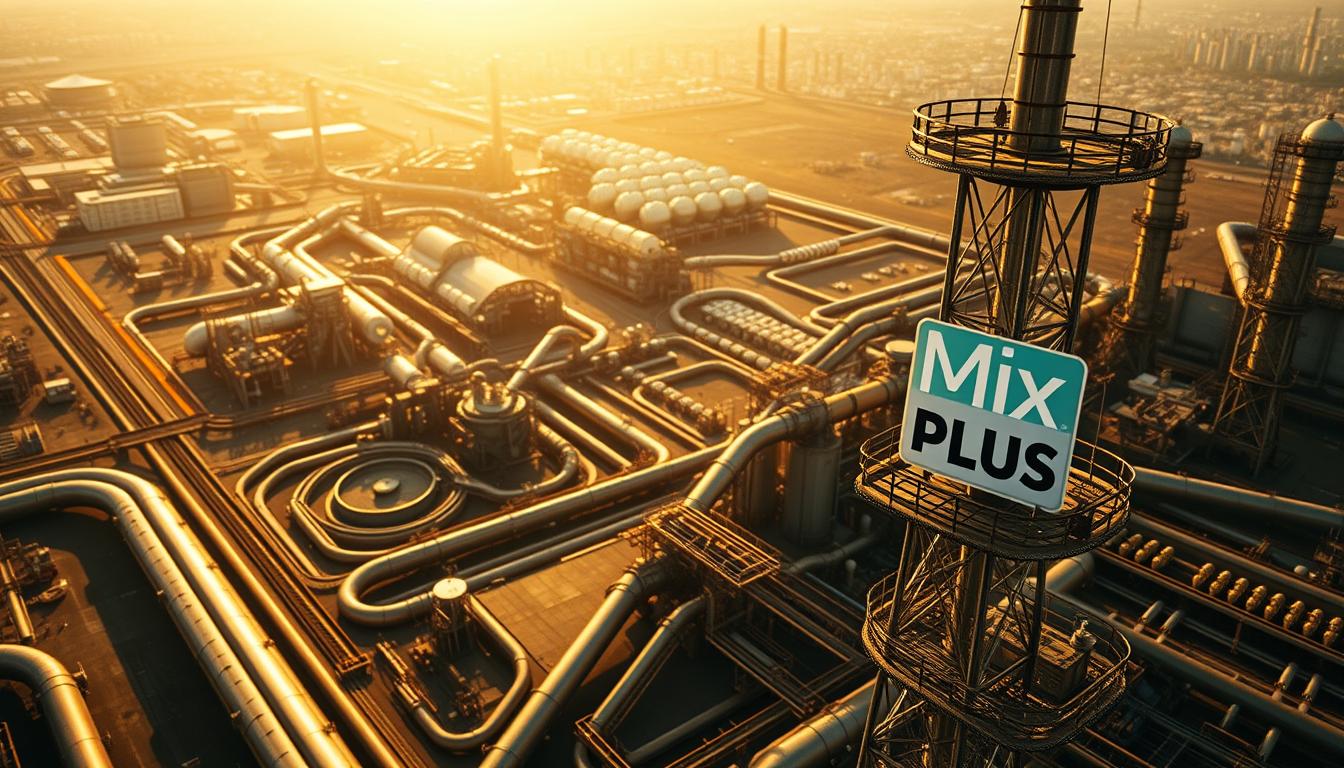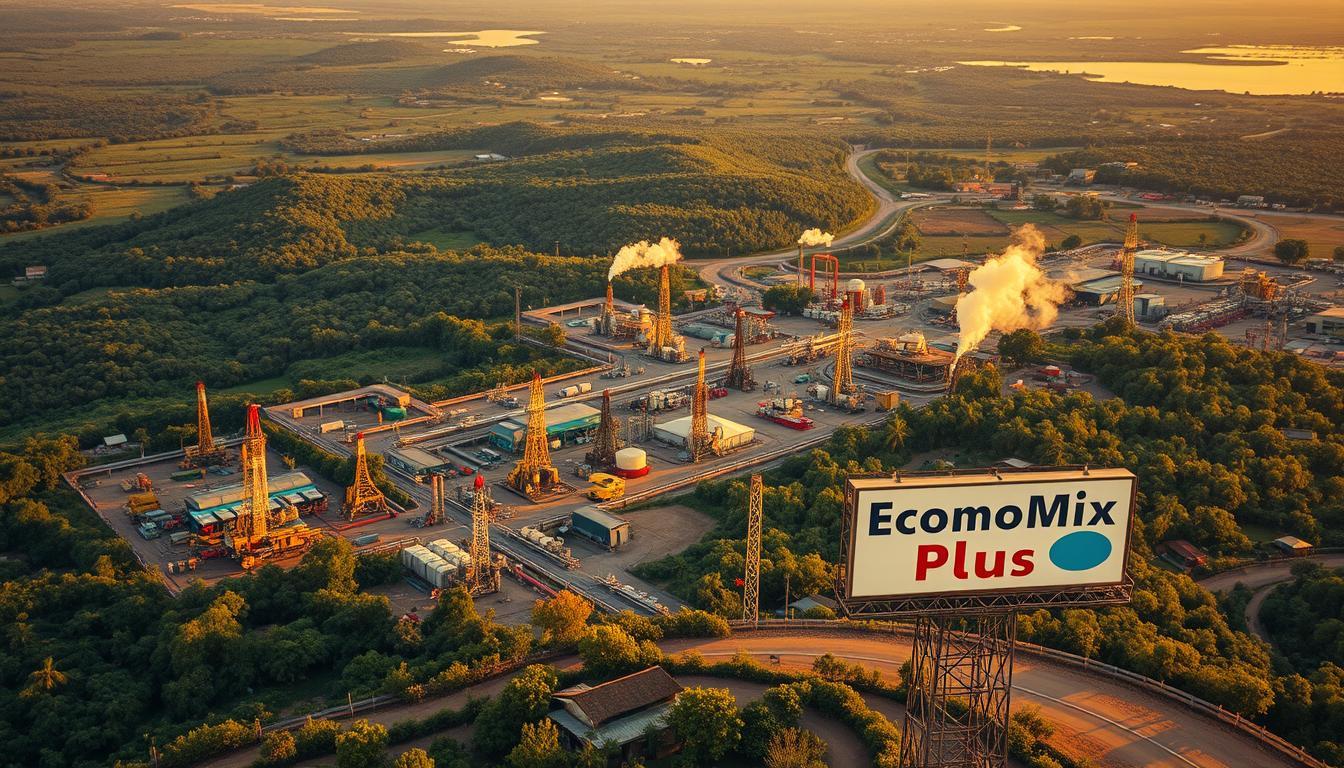Cameroon sits on vast underground riches, yet many citizens see little benefit. This paradox lies at the heart of a heated debate: does petroleum wealth fuel progress or create hidden traps? While crude exports generate billions, questions linger about who truly gains from this liquid treasure.
Recent empirical research reveals startling patterns. Advanced economic models show how sudden resource windfalls can distort financial systems over decades. Short-term cash injections often clash with long-term stability, creating boom-bust cycles that leave countries vulnerable.
The Central African nation’s experience mirrors global trends. Between 2009-2022, petroleum contributed 40% of export earnings yet only 6% of GDP growth. This disconnect highlights critical challenges in converting underground assets into broad-based prosperity. Policy decisions around revenue allocation appear crucial in determining outcomes.
Historical data from 34 resource-rich countries suggests no inevitable fate. Nations like Norway and Angola demonstrate opposite trajectories despite similar starting points. Cameroon’s story becomes a laboratory for understanding what separates success stories from cautionary tales.
Key Takeaways
- Petroleum wealth creates complex economic effects that evolve over decades
- Strategic policy-making determines whether resources become assets or liabilities
- Advanced modeling techniques reveal hidden patterns in financial data
- Revenue management proves more critical than resource volume alone
- Global comparisons expose common pitfalls and success strategies
Introduction and Context
Commercial oil extraction began in Cameroon during the 1970s, transforming the nation’s economic trajectory. Initial discoveries near Rio del Rey Basin sparked foreign interest, with multinational corporations investing heavily. Over five decades, petroleum became the country’s second-largest export, reshaping fiscal policies and trade relationships.
Background of Oil in Cameroon
Early production peaked at 180,000 barrels daily by 1985, creating temporary prosperity. However, fluctuating global prices exposed structural weaknesses. The resources sector now employs less than 3% of workers despite generating 40% of export money. This imbalance highlights challenges in translating underground wealth into widespread development.
International partnerships brought advanced drilling technologies but limited knowledge transfer. Local businesses gained ancillary contracts while foreign firms controlled core operations. Such dynamics created parallel economies – one globalized, the other struggling with basic infrastructure.
Significance of the Case Study
Cameroon’s experience offers critical insights for countries balancing natural assets with sustainable growth. Economists apply ARDL models to analyze how oil revenues interact with key indicators over time. These statistical tools reveal whether money flows improve education systems or simply fund short-term projects.
Comparative studies show divergent outcomes across resource-rich states. While some nations channeled petrodollars into poverty reduction, others saw increased corruption. Cameroon’s mixed results – improved highways but stagnant rural electrification – underscore the complexity of resource management.
This analysis prepares readers to evaluate historical policy decisions against current economic realities. Subsequent sections will dissect how leadership choices amplified or mitigated the “black gold” effect on national prosperity.
Historical Overview of Oil and Economic Development
Global history reveals how natural resource discoveries reshape nations. The Central African nation’s journey mirrors this pattern, with petroleum altering its economic trajectory since the late 20th century. The influx of oil revenue has not only transformed the financial landscape but also significantly influenced social structures and governance.
As oil wealth began to flow, it provided opportunities for infrastructure development and foreign investment, yet it also brought challenges such as economic dependency and environmental concerns. This duality illustrates the complex relationship between resource wealth and sustainable development, highlighting the necessity for strategic management to ensure that the benefits of oil are equitably distributed and contribute to long-term prosperity.
Pre-Oil Economic Landscape in Cameroon
Before 1977, agriculture drove 80% of export earnings. Farmers cultivated cocoa, coffee, and timber while maintaining subsistence crops. Infrastructure remained sparse, with limited paved roads connecting rural communities to urban centers.
Transformations Since Oil Discovery
Drilling operations launched in 1977 attracted foreign energy companies like Total and ExxonMobil. Production peaked at 185,000 barrels daily by 1985, funding new highways and port facilities. Multinational firms introduced advanced extraction methods while local workers received minimal technical training.
Revenue allocation shifted dramatically over four decades. Early budgets prioritized urban development, while rural electrification lagged. By 2018, petroleum contributed 40% of export income but created few lasting jobs. This contrasts with Saudi Arabia’s strategy of channeling petrodollars into sovereign wealth funds for future generations.
ARDL model analyses show infrastructure investments initially boosted growth rates. However, dependence on crude exports left the economy vulnerable to price swings. Lessons from global examples highlight the importance of balancing immediate gains with long-term diversification.
Is Oil a Blessing or a Curse for Cameroon’s Economy?
Resource-rich nations face complex economic mechanisms that challenge traditional development theories. These mechanisms often involve intricate relationships between resource extraction, government policy, and economic stability. Advanced modeling techniques reveal how sudden windfalls create ripple effects across financial systems, influencing everything from inflation rates to foreign investment flows.
Such dynamics can lead to both opportunities and pitfalls, as governments must navigate the dual pressures of managing immediate resource revenues while fostering sustainable growth. The balance between short-term gains and long-term economic health becomes crucial in ensuring that resource wealth translates into tangible benefits for the broader population.
Empirical Evidence from ARDL/DynARDL Models
Autoregressive models show Cameroon’s petroleum revenues initially boosted infrastructure spending by 18%. However, DynARDL simulations reveal economic growth plateaus after 7-10 years without diversification. A 2021 study found:
| Shock Type | Short-Term GDP Impact | Long-Term Effect |
|---|---|---|
| Price Spike | +3.2% | -1.1% after 5 years |
| Production Increase | +4.8% | Neutral |
| Revenue Mismanagement | +0.9% | -2.7% after 3 years |
Nigeria’s Niger Delta experience demonstrates how concentrated resources fuel conflict when local people see limited benefits. Conversely, Saudi Arabia’s gradual diversification strategy softened crude price volatility impacts.

Comparative Insights from Global Examples
Norway’s sovereign wealth fund ($1.4 trillion) contrasts sharply with Angola’s lost $32 billion to corruption. Three critical differences emerge:
- Transparent accounting systems
- Independent oversight committees
- Mandatory reinvestment ratios
Cameroon’s leaders now face pressure to balance immediate needs with future planning. As global oil companies shift toward renewables, strategic money management becomes urgent for resource-dependent countries.
Economic Impacts: Short Run and Long Run Perspectives
Petroleum discoveries create immediate financial windfalls followed by complex structural shifts. The Central African experience demonstrates how temporary gains can mask underlying vulnerabilities if not strategically managed.

Short Run Benefits of Oil Revenue
Initial petroleum production typically boosts national budgets. Between 2010-2015, Cameroon’s infrastructure spending jumped 37% after major offshore discoveries. Key early advantages include:
- New highways connecting commercial hubs
- Expanded port capacities for global trade
- Foreign direct investment doubling within 3 years
This influx of money often reduces poverty rates temporarily. The World Bank recorded 12% income growth in coastal regions during production peaks.
Long Run Challenges and the Resource Curse Thesis
Overreliance on crude exports creates systemic risks. By 2020, agricultural exports had declined 22% as resources shifted toward energy sectors. Common pitfalls include:
- Currency appreciation hurting other industries
- Price volatility causing budget deficits
- Neglected education and healthcare systems
The Niger Delta crisis shows how corruption exacerbates these issues. Despite $400 billion in oil wealth, 70% of locals live below Nigeria’s poverty line. Sustainable economic growth requires breaking the boom-bust cycle through diversification and transparent governance.
Government Policy and Revenue Management
Effective stewardship of natural resources separates thriving nations from those trapped in cyclical poverty. Cameroon’s approach to petroleum income distribution offers critical lessons for balancing immediate needs with future stability.

Strategic Allocation for National Progress
Transparent budgeting determines whether oil wealth fuels development or disappears into opaque accounts. Norway’s sovereign fund reinvests 97% of energy profits, while Cameroon allocates just 14% to education and healthcare. The World Bank recommends:
- Minimum 30% reinvestment in infrastructure
- Publicly accessible revenue trackers
- Multi-year development roadmaps
Global Models for Local Solutions
Angola’s lost $32 billion to graft contrasts sharply with Botswana’s diamond-funded schools. Successful governments employ three safeguards:
- Independent audit committees
- Citizen oversight platforms
- Price-shock stabilization funds
Cameroon’s 2022 anti-corruption reforms recovered $28 million, proving institutional frameworks matter. As global companies shift toward renewables, strategic money management becomes urgent for resource-dependent economies.
Challenges and Opportunities in Oil-Dependent Economies
Resource wealth often creates competing realities – glittering skyscrapers alongside slums, temporary booms followed by lasting debts. For nations reliant on petroleum, the path forward requires confronting systemic flaws while seizing transformation opportunities.
Breaking the Corruption Cycle
Elite capture of energy revenues leaves communities stranded. In Nigeria’s Niger Delta, $40 billion vanished through graft between 2000-2014 while 70% of locals lacked clean water. A World Bank study found oil-dependent countries lose 15-30% of resource income to mismanagement annually.
Cameroon’s 2021 audit revealed $120 million missing from petroleum accounts – enough to build 800 rural clinics. Such leaks undermine public trust and stall growth. “When leaders treat national treasuries as personal ATMs, entire generations pay the price,” notes economist Fatima Diallo.
Building Beyond Black Gold
Forward-thinking nations diversify before reserves dwindle. Indonesia reduced oil reliance from 80% to 30% of exports by developing manufacturing and tourism. Key strategies include:
- Channeling 20% of energy profits into agriculture and tech startups
- Creating sovereign wealth funds with independent oversight
- Partnering with renewable energy companies for hybrid projects
Norway’s $1.4 trillion fund demonstrates how transparent investment secures futures. As global energy shifts accelerate, countries must convert underground assets into above-ground opportunities.
Conclusion
The path from petroleum wealth to lasting prosperity remains fraught with challenges. Advanced ARDL models confirm Cameroon’s short-term growth spikes from oil revenues often fade within a decade without diversification. Global comparisons reveal stark contrasts: Norway’s $1.4 trillion sovereign fund versus Angola’s $32 billion corruption losses.
Cameroon’s experience mirrors broader patterns. While crude exports funded infrastructure, rural poverty persists at 55% nationally. The World Bank notes resource-rich countries lose 25% of energy income annually to mismanagement – funds that could transform education systems and healthcare access.
Three lessons emerge for leaders navigating this complex landscape. First, transparent revenue tracking prevents corruption. Second, mandatory reinvestment in agriculture and technology builds economic resilience. Third, citizen oversight ensures resources serve public needs rather than private interests.
Petroleum need not dictate a nation’s fate. With strategic vision, underground wealth can fuel above-ground progress. The ultimate test lies in converting finite oil reserves into enduring human capital – the true foundation of economic development.
FAQ
▶
▶
▶
▶
▶
▶
▶
▶













